Top 3 Biggest Problems With Crypto Market in June: Trading Volume, Liquidity, and Selling Pressure

As the month of June unfolds, investors who engage in crypto trading will grapple with three major hurdles. Indeed, these obstacles could send ripples across the crypto market.
These issues include a concerning dip in trading volume, alarming liquidity issues, and a substantial increase in selling pressure.
Trading Volume Plummets
The trading momentum and expectations were high in the crypto market’s first quarter this year. However, a disturbing decline in trading volume across all major centralized exchanges has been observed since.
May’s aggregated daily trading volumes have shrunken from an impressive $23 billion to a paltry $9 billion. This downtrend signals a diminishing speculative interest and a growing apathy toward the crypto market.
“Daily crypto trading volume is now the lowest that it has been since 2020. Market in aggregate is in a period of apathy and capitulation through time – lack of speculative interest from the masses sparks opportunity for those with a strong belief,” said analyst Will Clemente.
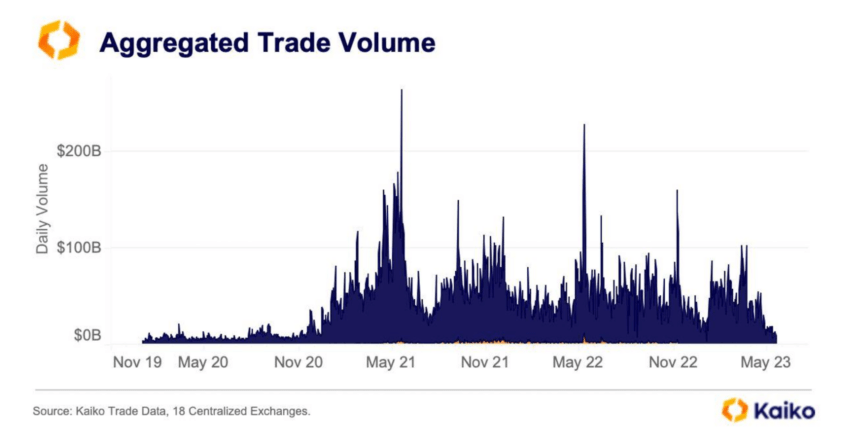
Crypto Trading Volume. Source: Kaiko
Regarding the breakdown of overall trading volume by exchange, Binance has experienced a slump. Its market share has plunged to 56%, a stark 15% drop from its peak in the second half of 2022.
Contrarily, this decline has favored exchanges in the other categories, which comprises platforms such as Huobi, Kraken, and Kucoin.
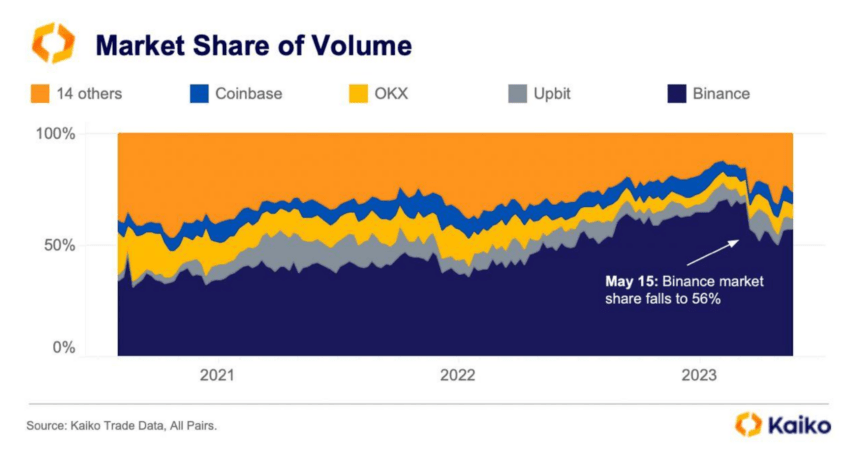
Crypto Market Share. Source: Kaiko
With the regulatory landscape in the United States remaining uncertain, offshore exchanges maintain their dominance in the crypto trading ecosystem. They make up a staggering 86% of the entire trading volume. This trend is predicted to intensify.
Surprisingly, even Coinbase, traditionally recognized as a compliant alternative to other crypto venues, announced the introduction of its own offshore derivatives venue, the Coinbase International Exchange.
Crypto Liquidity Crisis
The second major issue casting a shadow over the crypto market is a liquidity crisis. This is especially significant for Bitcoin and Ethereum.
Despite the USD-denominated market depth remaining somewhat stable. Liquidity has been flat as measured by coin-denominated 2% market depth, meaning the depth of bids and asks within 2% of the current trading price. This reflects an increasing indifference toward the crypto market.
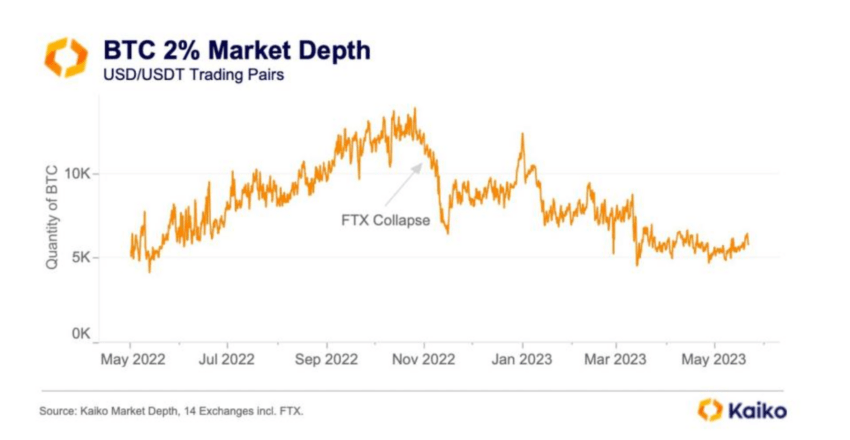
Crypto Market Depth. Source: Kaiko
The ongoing liquidity decline has elicited statements from Jane Street and Jump Crypto, two market makers, revealing plans to scale back their crypto operations in the US due to regulatory uncertainties. Jane Street went further, announcing a global scale-back of its crypto operations.
The implications of reduced liquidity in the crypto market are significant. Liquidity is a critical aspect of any financial market, including crypto. It refers to the ease with which assets can be bought or sold in the market without affecting the asset’s price.
High liquidity levels create a more secure and efficient market. Therefore, allowing participants to enter easily and exit trades leads to tighter spreads.
In contrast, low liquidity can hinder the ability of market participants to execute larger trades without incurring price impact, also known as slippage.
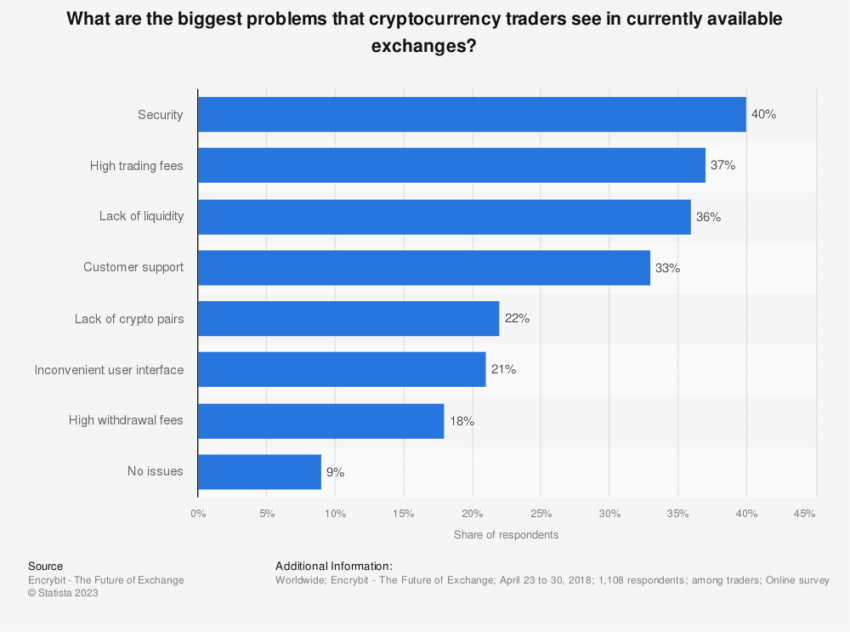
Biggest Problems Crypto Traders Face. Source: Statista
In practical terms, if a trader wants to sell a significant quantity of crypto and there are not enough buyers, the price may have to be reduced to make it appealing. This process could create a downward price spiral, leading to lower prices and possibly triggering a sell-off.
Surging Selling Pressure
The third problem presented in June 2023 is the surge in selling pressure as Bitcoin dropped below $27,000.
While the crypto community keeps a watchful eye on crucial price levels, concerns around liquidity have been amplified in the wake of legislative actions in the US.
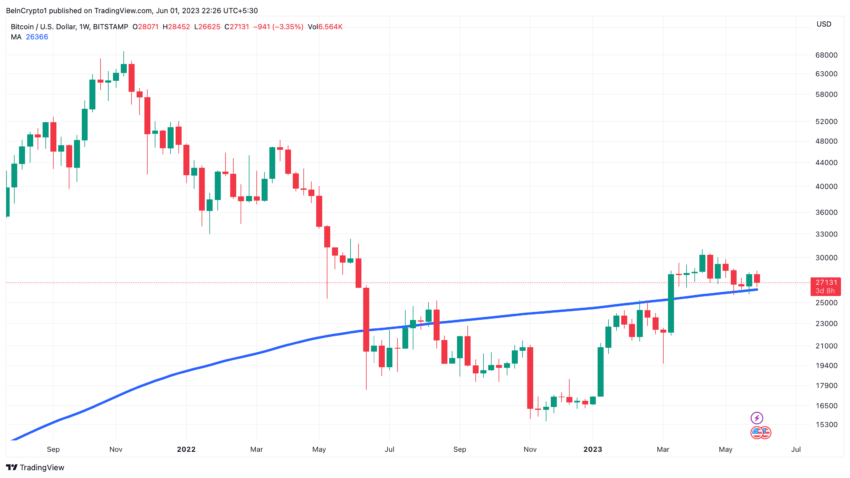
Bitcoin US Dollar Price Chart. Source: TradingView
Antoni Trenchev, managing partner of crypto lender Nexo, raised an interesting point.
“Bitcoin faces a number of potential banana skins in June now the debt ceiling drama looks to have passed. Once the Senate likely backs the debt-limit legislation, the market faces a flood of treasury bill issuance, which will likely draw liquidity away from risk assets like Bitcoin,” said Trenchev.
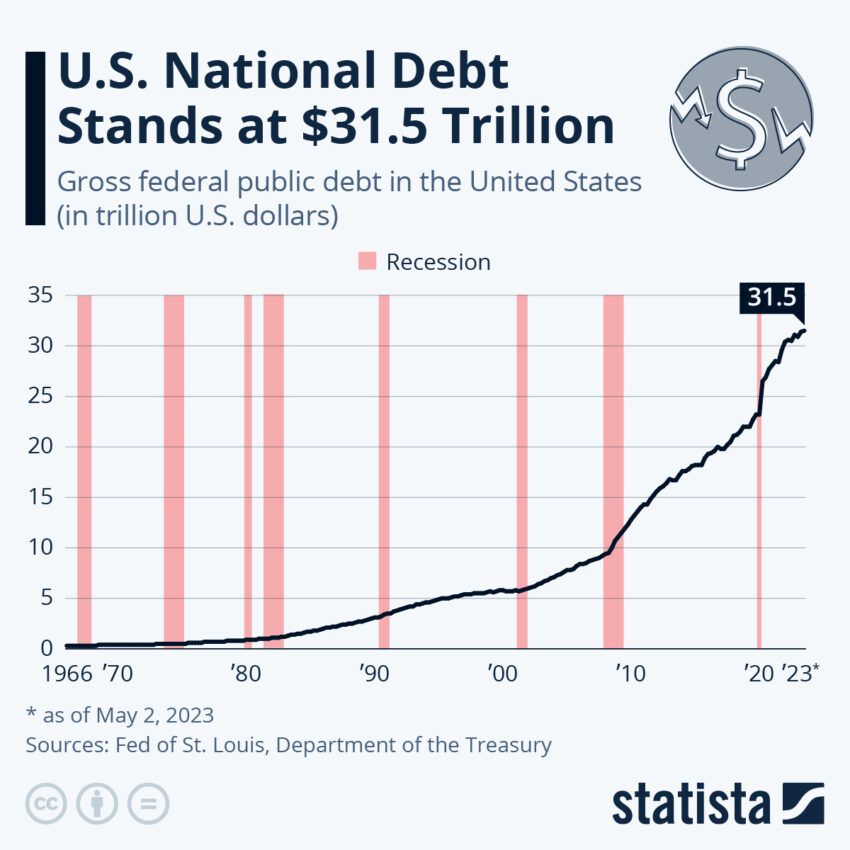
US Debt Ceiling. Source: Statista
The US House of Representatives recently approved a deal to suspend the $31.5 trillion debt ceiling. This could result in the issuance of up to $1 trillion in US Treasury bills, posing additional pressure on Bitcoin.
“For Bitcoin, it’s quite simple: Stay above the 200-week moving average around $26,300, and the bullish uptrend from the November low of $15,500 is intact. On the upside, get above $31,000, and things might start to get really interesting,” remarked Nexo’s Trenchev.
Still, Maartunn, Community Manager at CryptoQuant, believes that despite the recent spike in selling pressure similar to previous sell-offs, it may peak soon and revert.






 Bitcoin
Bitcoin  Ethereum
Ethereum  Tether
Tether  USDC
USDC  TRON
TRON  Dogecoin
Dogecoin  Cardano
Cardano  Bitcoin Cash
Bitcoin Cash  Chainlink
Chainlink  Monero
Monero  Stellar
Stellar  LEO Token
LEO Token  Zcash
Zcash  Litecoin
Litecoin  Hedera
Hedera  Dai
Dai  Cronos
Cronos  Tether Gold
Tether Gold  OKB
OKB  Ethereum Classic
Ethereum Classic  KuCoin
KuCoin  Gate
Gate  Algorand
Algorand  Cosmos Hub
Cosmos Hub  VeChain
VeChain  TrueUSD
TrueUSD  Dash
Dash  Tezos
Tezos  Stacks
Stacks  IOTA
IOTA  Basic Attention
Basic Attention  Theta Network
Theta Network  Decred
Decred  NEO
NEO  Synthetix
Synthetix  Qtum
Qtum  Ravencoin
Ravencoin  0x Protocol
0x Protocol  DigiByte
DigiByte  Zilliqa
Zilliqa  Nano
Nano  Holo
Holo  Siacoin
Siacoin  Numeraire
Numeraire  Waves
Waves  BUSD
BUSD  Ontology
Ontology  Status
Status  Pax Dollar
Pax Dollar  Enjin Coin
Enjin Coin  Hive
Hive  Lisk
Lisk  Steem
Steem  Huobi
Huobi  OMG Network
OMG Network  NEM
NEM  Bitcoin Gold
Bitcoin Gold  Augur
Augur  Ren
Ren  HUSD
HUSD